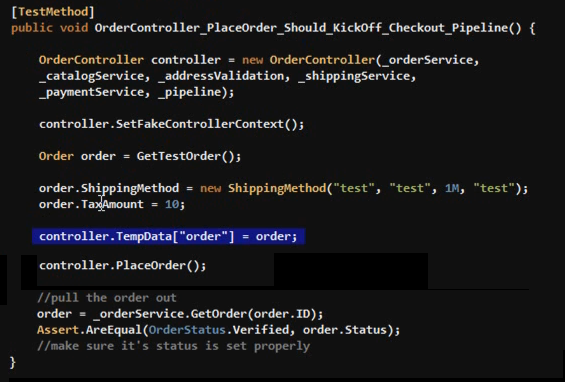 Here is an interesting problem that I run into. I needed to produce an XML document for an external system to consume. This is a fairly complex document format, and there are a lot of scenarios to support. I began to test drive the creation of the XML document, but it turn out that I kept having to make changes as I run into more scenarios that invalidated previous assumptions that I made.
Here is an interesting problem that I run into. I needed to produce an XML document for an external system to consume. This is a fairly complex document format, and there are a lot of scenarios to support. I began to test drive the creation of the XML document, but it turn out that I kept having to make changes as I run into more scenarios that invalidated previous assumptions that I made.
Now, we are talking about a very short iteration cycle, I might write a test to validate an assumption (attempting to put two items in the same container should throws) and an hour later realize that it is a legal, if strange, behavior. The tests became a pain point, I had to keep updating things because the invariant that they were based upon were wrong.
At that point, I decided that TDD was exactly the wrong approach for this scenario. Therefor, I decided that I am going to fall back to the old "trial and error" method. In this case, producing the XML and comparing using a diff tool.
The friction in the process went down significantly, because I didn't have to go and fix the tests all the time. I did break things that used to work, but I caught them mostly with manual diff checks.
So far, not a really interesting story. What is interesting is what happens when I decided that I have done enough work to consider most scenarios to be completed. I took all the scenarios and started generating tests for those. So for each scenario I now have a test that tests the current behavior of the system. This is blind testing. That is, I assume that the system is working correctly, and I want to ensure that it keeps working in this way. I am not sure what each test is doing, but the current behavior is assumed to be correct until proven otherwise..
Now I am back to having my usual safety net, and it is a lot of fun to go from zero tests to nearly five hundred tests in a few minutes.
This doesn't prove that the behavior of the system is correct, but it does ensure no regression and make sure that we have a stable platform to work from. We might find a bug, but then we can fix it in safety.
I don't recommend this approach for general use, but for this case, it has proven to be very useful.












